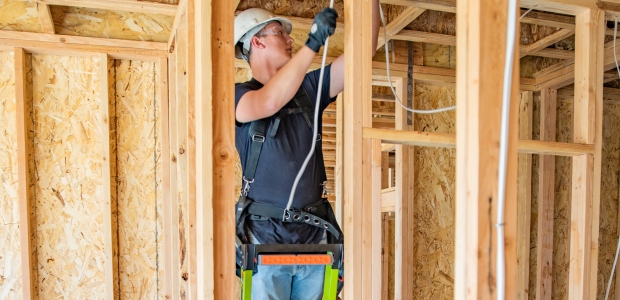
Getting Rid of Ladders = Getting Rid of Traditional Ladders
We know how people misuse ladders, so we can add safety features to prevent the accidents from happening—even when they are misused.
- By Dave Francis
- Jul 15, 2019
People have been using ladders for thousands of years. Archaeologists have found cave paintings in Spain showing people using ladders that date earlier than the invention of the wheel. Unfortunately, the basic design of ladders hasn't changed much in all that time. Ladders are built to ANSI standards and to meet OSHA requirements, but their design is very simple, and they can be easily misused.
Many industrial companies have started removing all ladders from the job site in an effort to reduce the risk of ladder-related accidents. Instead of focusing on getting rid of ladders, however, companies should focus on replacing traditional ladders with better, safer ladders. Here are some common problems with ladders that cause most ladder accidents:
Ladders Are Too Heavy
In some service industries, almost half of ladder-related injuries are strains and sprains from handling a heavy ladder. Some workers are doing 8-12 visits a day with a 28-foot extension ladder weighing more than 70 pounds. (And you thought you were tired at the end of a day.)
The solution to this problem is to make lighter ladders. New fiberglass materials are available and can reduce the weight of your ladder by 20 percent. Most ladder companies now offer a lighter-weight version of their ordinary extension ladders.
Stepping off the Ladder Early
This one sounds crazy but it happens, injuring people every day. Workers climbing down their ladders in a hurry thinking they are at the bottom, and they step off from the second or third rung. This common mistake causes a lot of sprained or broken ankles and blown knees but also has been responsible for some very serious injuries where the person fell on his back or neck.
We have heard a lot of ideas on how to prevent this problem, everything from color-coding the side rails to laser-activated buzzers at the bottom. The best solution by far has been the "Ground Cue." This device makes the bottom step both feel and sound different than all of the other steps on the ladder. You don't need a sticker or a training class; you just have to use it a few times. The user becomes conditioned to know he or she has reached the bottom rung when he or she hears and feels the Ground Cue.
People Use the Wrong Ladder for the Job
Often, workers think the right ladder for the job is too heavy. If I have the choice to carry a 4-foot stepladder or a 6-foot stepladder, I'll probably carry the 4-footer and try to make it work by climbing on the top step or top cap of the ladder to get the job done. The top step of a stepladder has a sticker on it that essentially says, "This is not a rung. Don't stand here." If the only purpose for the top step is to hold the sticker telling you not to use it, why is it there in the first place? If it's not there, you can't use it, and hopefully this will discourage you from trying to stand on the top of the ladder.
Another mistake ladder users make is leaning an ordinary stepladder against a wall when they need to get close to their work. If you need a leaning ladder, choose a ladder that has been designed to work that way so you can work close to your job without risking your safety.
Leveling a Ladder
When I ask people how they level their ladders, the common response is "bricks and boards." It is recommended that you dig out the high side instead of trying to build up the low side to properly level a ladder. You also can purchase a ladder leveler to add to your ladder or choose a ladder with a leveler integrated into the ladder.
Over-Reaching
Improper leveling and over-reaching are the major causes of tip-and-fall accidents. These accidents cause thousands of disabling injuries and hundreds of fatalities every year.
We train people to keep their bodies between the side rails of the ladder, but we know that doesn't always happen. One solution to this problem is adding wide-stance levelers to the bottom of an extension ladder to increase the footprint. If the climber can't get outside the footprint of the ladder, they won't be able to tip it over. Those wide-stance levelers also easily adapt to changing and unlevel ground, giving the ladder a wide, level base. Adding a caged platform at the top of a stepladder is another way to keep the user centered inside.
OSHA has great ladder safety training on its website. The American Ladder Institute offers free online ladder safety training at its website www.laddersafetytraining.org, but training alone is not enough. We know how people misuse ladders, so we can add safety features to prevent the accidents from happening—even when they are misused. This is safety through design, not just safety training.
This article originally appeared in the July/August 2019 issue of Occupational Health & Safety.